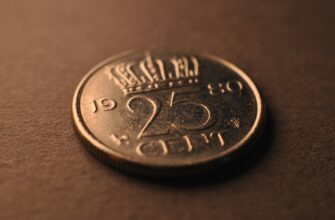- What is the Bitcoin Halving?
- Why the Halving Matters for Investors
- Tracking the Halving Countdown on CoinMarketCap
- Historical Halving Performance Analysis
- Preparing for the 2024 Halving
- Frequently Asked Questions (FAQ)
- How often does Bitcoin halving occur?
- Can CoinMarketCap’s halving countdown be wrong?
- Will Bitcoin price always rise after halvings?
- What happens after the final Bitcoin is mined?
- How does halving impact altcoins?
What is the Bitcoin Halving?
The Bitcoin halving is a pre-programmed event in Bitcoin’s code that slashes the block reward for miners by 50% approximately every four years. Designed by Satoshi Nakamoto to control inflation, it ensures Bitcoin’s total supply caps at 21 million coins. With only 32 halvings possible before all coins are mined, each event accelerates Bitcoin’s journey toward absolute scarcity.
Why the Halving Matters for Investors
Halvings trigger seismic shifts in Bitcoin’s economics:
- Supply Shock: Fewer new coins enter circulation, amplifying scarcity.
- Historical Price Surges: Previous halvings preceded bull runs (2012: +8,000%; 2016: +2,900%; 2020: +700%).
- Miner Evolution: Less efficient miners exit, consolidating network security among major players.
This supply-demand recalibration makes tracking the halving countdown critical for anticipating market movements.
Tracking the Halving Countdown on CoinMarketCap
CoinMarketCap offers real-time halving data. Here’s how to use it:
- Visit CoinMarketCap.com
- Navigate to the “Bitcoin” page
- Locate the “Halving Countdown” widget under market data
- Monitor key metrics: Estimated date, block height progress, and reward reduction details
The tool updates every 10 minutes, using Bitcoin’s average block time to project the next halving (expected April 2024 at block 840,000).
Historical Halving Performance Analysis
Past halvings reveal powerful patterns:
- 2012 Halving: Reward dropped from 50 to 25 BTC. Price rose from $12 to $1,100 in a year.
- 2016 Halving: Reward fell to 12.5 BTC. BTC surged from $650 to $20,000 by late 2017.
- 2020 Halving: Reward reduced to 6.25 BTC. Catalyzed a climb from $8,000 to $69,000.
While past performance doesn’t guarantee results, the supply shock consistently reshapes market dynamics.
Preparing for the 2024 Halving
Strategic actions before the next halving:
- Monitor Hashrate: Declines may signal miner capitulation, creating buying opportunities.
- Dollar-Cost Average: Accumulate BTC systematically to mitigate volatility.
- Verify Exchange Reserves: Use CoinMarketCap’s liquidity metrics to avoid unstable platforms.
Post-halving, expect increased volatility as the market adjusts to reduced sell pressure from miners.
Frequently Asked Questions (FAQ)
How often does Bitcoin halving occur?
Roughly every four years or after 210,000 blocks are mined. The next is projected for April 2024.
Can CoinMarketCap’s halving countdown be wrong?
It’s highly accurate but estimates may shift slightly due to variable block times. The countdown adjusts as new blocks are added.
Will Bitcoin price always rise after halvings?
Historically yes, but macro factors like regulations or black swan events can override halving effects. Never invest more than you can afford to lose.
What happens after the final Bitcoin is mined?
Around 2140, miners will earn only transaction fees. Network security will rely on fee market dynamics rather than block rewards.
How does halving impact altcoins?
Major halvings often ignite “altcoin seasons” as capital rotates from BTC into smaller caps. Monitor CoinMarketCap’s market cap trends to spot opportunities.








